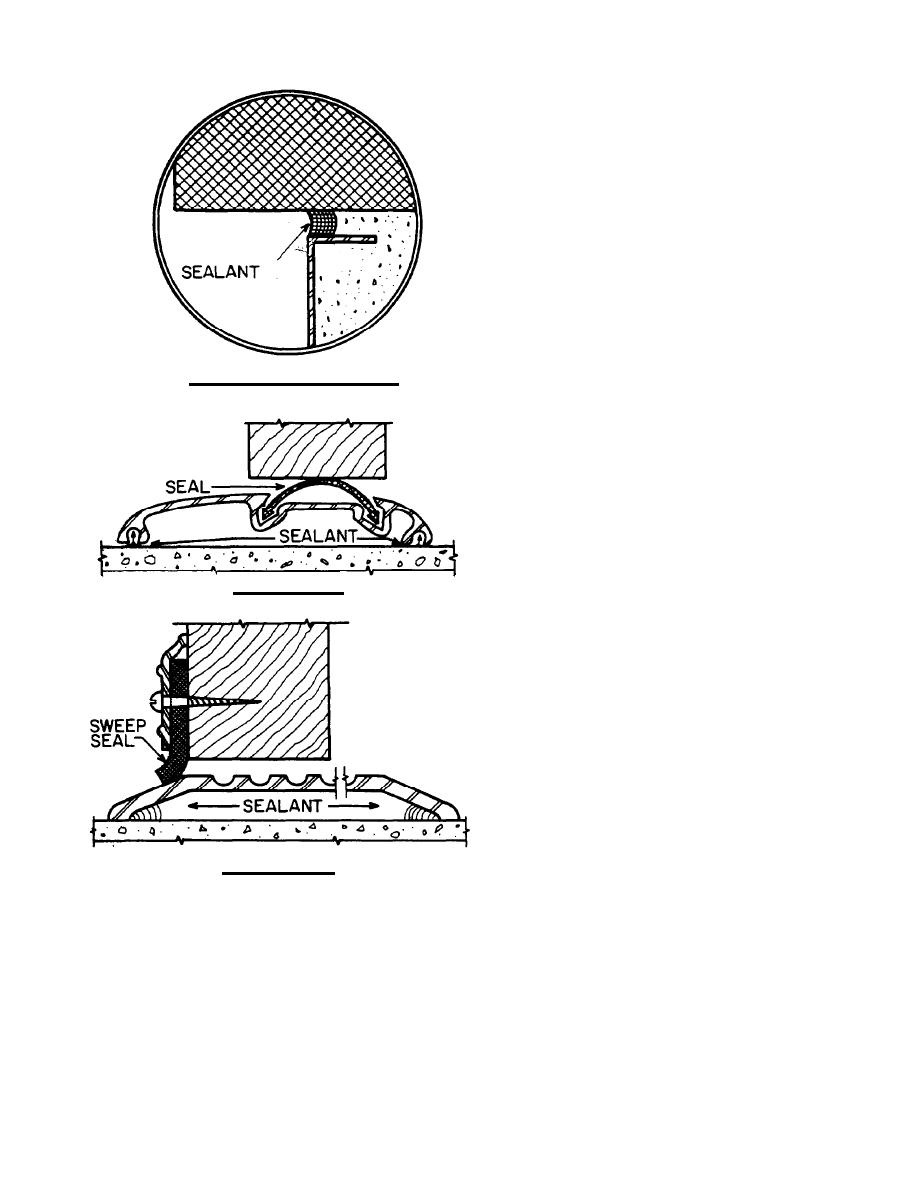
TM 5-805-6
d. Caulking. Oil- and resin-based caulking is
inexpensive and oxidizes to form a tack-free sur-
face skin that can be painted.
(1) Oil- and resin-based caulking must be used
with caution because it shrinks while curing,
hardens with aging, cannot be immersed in water,
and has limited resistance to joint movement.
Applications should be limited to rigid interior
joints not more than 6.3 mm ( inch) wide because
the caulking lacks elasticity and may shrink as
much as 20 percent. Paint will extend the service
life of caulking and will protect the material from
occasional exposure to water.
(2) Oil- and resin-based caulking should be
applied at temperatures between 4 and 38 degrees
C (40 and 100 degrees F). The service temperature
HEAD AND JAMB DETAIL
range is from -30 to 39 degrees C (- 20 to + 150
degrees F). Type I is used in caulking guns and
Type II is applied with a putty knife.
e. Latex sealants. Latex sealants adhere well to
wood, masonry, and concrete. Depending on the
grade of material, these sealants have varied
weather resistance which is improved by applying
a coat of paint.
(1) Latex sealants may shrink as much as 30
percent while curing and have limited resilience
when cured. Consequently, latex sealants should
be used only for temporary or low budget construc-
SILL DETAIL
tion where joint movement does not exceed 15
percent of the joint width.
(2) Many acoustic applications can be satisfied
with latex sealants, as shown in ASTM C 919.
(3) The binder in a latex sealant may be
natural rubber or a synthetic polymer. The most
common latex sealants are based on a water-
dispersed acrylic polymer, thus the terms "latex"
and "acrylic" are often used interchangeably.
f. Acrylic sealants. Acrylic sealants are widely
used because they are inexpensive and adhere well
to most porous surfaces. Most acrylic sealants are
water dispersed ("latex") but they are also avail-
able in solvent dispersions. These sealants usually
shrink up to 30 percent during the curing process.
SILL DETAIL
The service temperature range for acrylic sealants
is from -30 to +84 degrees C (-20 to +180
degrees F). A quality acrylic sealant may have a
Figure 7. Exterior Door and Threshold.
life expectancy up to 20 years.
(1) The quality of acrylic sealants varies; the
c. Primer. Some sealants require a primer to
higher the acrylic polymer content, the better the
promote adhesion to all substrates. More often, a
flexibility and resistance to weathering (and the
primer is only needed on a non-porous substrate
higher the cost). Solvent based systems often have
such as glass or metal. A primer is generally
better water resistance than those dispersed in
desinged for use with a particular commercial
water.
(2) Acrylic sealants should not be exposed to
sealant and may be restricted to specified sub-
strates. Primers should be provided (and used as
standing water and they do not bond well to bare
metal or glass unless a primer is applied first.
recommended) by the sealant manufacturer.
6



 Previous Page
Previous Page
